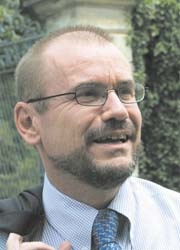Health Optimum
Downloading digitally signed clinical test results from home is possible and 40% of users residing in the Treviso region in Veneto, do so regularly.

In eight elderly people’s homes in the region, lab results are managed on site using simplified, standardised workflows. With new point of care testing (POCT) instruments, nurses carry out tests and receive results at a patient’s bedside, reducing the turnaround time (TAT) from 24 hours to 10 minutes. This eliminates the transfer of samples and results on paper and saves cost, particularly when tests are carried out in remote areas.
Furthermore, in emergencies - thanks to tele-counselling — in 2005 about 160 inappropriate patient transfers from peripheral hospitals to centres of excellence were avoided, with calculated savings around Ä200 per tele-counselling case. The time that trauma patients spent in peripheral hospitals under observation was reduced, along with the waiting time for trauma patients needing neurosurgery.
This also is thanks to the European project Health Optimum (May 2004 - January 2006), which validated the re-engineering of healthcare delivery through telemedicine — telecounselling, telelaboratory, virtual referral, telecare and shared clinical data in three European regions: Veneto, Italy; Aragon, Spain, and Funen, Denmark.
The basis of the success of Health Optimum was the network created including six centres of excellence (hubs) and six peripheral structures (spokes) in the Veneto Region for tele-laboratory and neurosurgical telecounselling.
Meeting monthly, neurosurgeons, neuro-radiologists, laboratory technicians, IT experts and the project working party discussed and agreed on work to be done. Cooperation was paramount to fulfil the objectives set.
Physicians working on the Health Optimum circuit can count on consultations from neurosurgeons and neuroradiologists in any centre, at any time. Whether in a peripheral hospital needing a neurosurgical consultation, or from a centre of excellence needing a second opinion, the physician fills in and digitally signs a standardised form that is sent with the CT images.
All data produced in these trials are stored in a common, regional, electronic health record (HER), which includes test results, medical reports, requests for second opinion and replies. The system is based on an IHE XDS profile (cross enterprise document sharing), and comprises two IHE actors, i.e. Document Registry and the Document Repository, to save and retrieve a set of documents and to query information.
Health Optimum was an important and essential stepping stone towards a more encompassing consortium - the ‘Consorzio Telemedicina’. Set up in October 2005, it includes 22 Veneto healthcare structures. It is an organisational platform to diffuse best practices and define, analyse and develop common telemedicine semantics, and to facilitate the sharing of project results. Through this new consortium the essential aim is to offer healthcare providers a means to cope with an increasing demand for healthcare services with substantial productivity gains and to reshape the future of healthcare delivery, making it more citizen-centred.
01.05.2006











